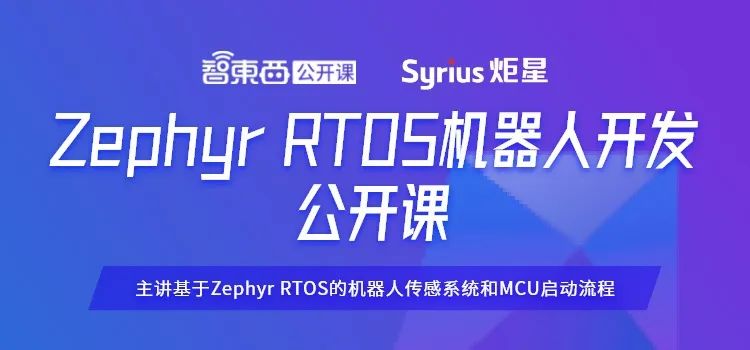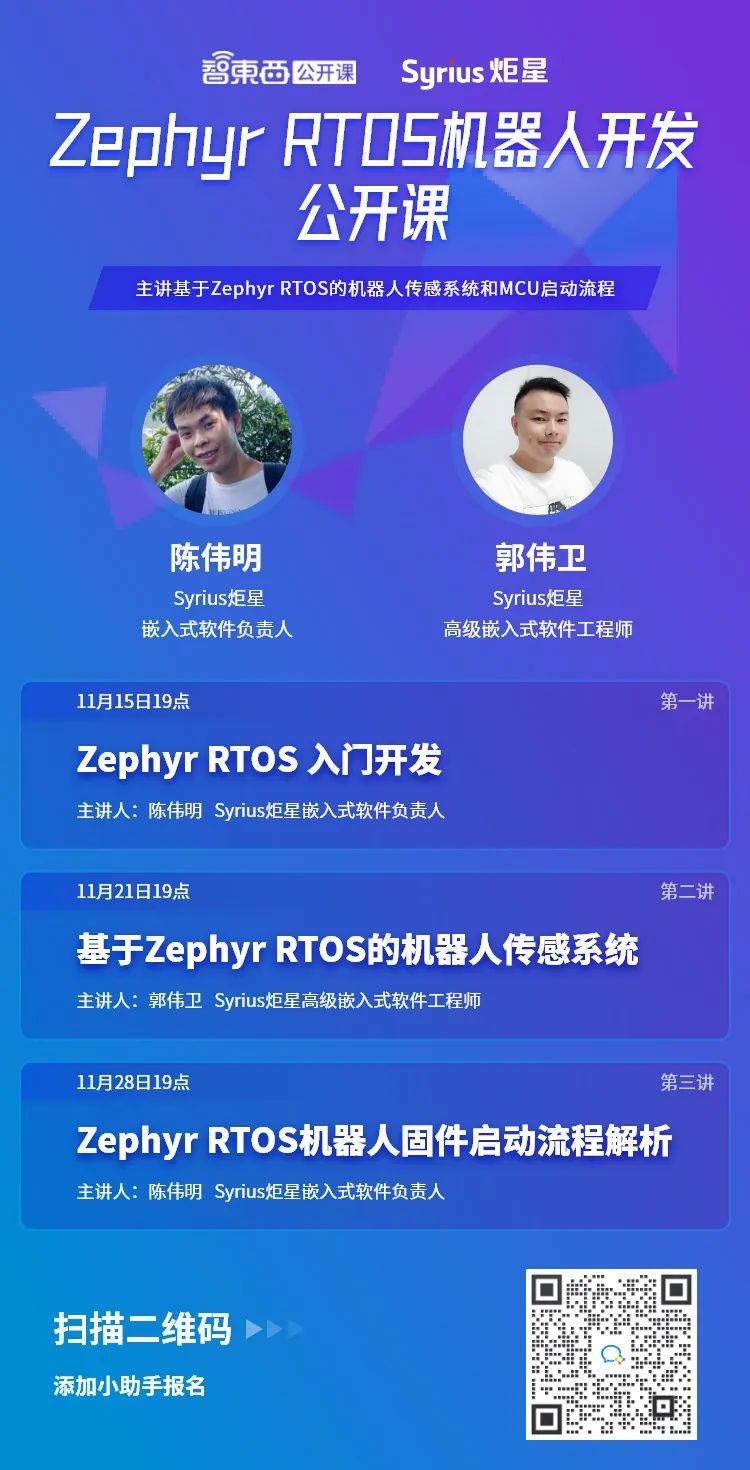
Robots are not isolated systems; they are a set of distributed sensors and actuators, often running on resource-constrained small embedded devices (microcontrollers) that communicate via wired or wireless connections. However, mainstream robotic operating systems like ROS/ROS2 are too large and heavy, making them unsuitable for robotic scenarios based on microcontrollers with hard real-time requirements.
Zephyr RTOS is a real-time operating system (RTOS) specifically designed for resource-constrained devices, optimized for low-power, small-memory microprocessor devices. It supports various hardware architectures and development boards (including ARM Cortex-M, Intel x86, ARC, NIOS II, Tensilica Xtensa, and RISC-V), and can run smoothly on MCUs with as little as 8KB of RAM, and even down to 2KB with trimming.
So, how can we develop robots based on Zephyr RTOS, build the core sensing system, and run it on an MCU? Starting in November, the Zhixiaodong Public Course Visual AI Research Group is launching the “Zephyr RTOS Robotics Development Public Course.” The underlying embedded technology of Juxing Robotics is implemented based on Zephyr RTOS, and we have invited Chen Weiming, the head of embedded software at Syrius Juxing, and Guo Weiwei, a senior embedded software engineer at Syrius Juxing, to give a total of three lectures.

On November 15 at 7 PM, Chen Weiming, head of embedded software at Syrius Juxing, will present the first lecture live, titled “Introduction to Zephyr RTOS Development.” He will start with the features of Zephyr RTOS and then focus on source code compilation, hardware and software environment configuration, practical building of robotic system engineering, and writing device driver cases. Through this content, participants will gain insight into the rich ecosystem of Zephyr and understand the basic programming templates for device drivers.
On November 21 at 7 PM, Guo Weiwei, a senior embedded software engineer at Syrius Juxing, will present the second lecture titled “Robot Sensing System Based on Zephyr RTOS.” He will provide a comprehensive explanation of the robot sensing system from the aspects of the Zephyr RTOS development model, multi-device instances, system call operations, and the construction of the core sensing system.
The third lecture will take place on November 28 at 7 PM, presented by Chen Weiming, focusing on “Analysis of the Robot Firmware Startup Process Based on Zephyr RTOS.” He will first explain the relationship between the Zephyr RTOS and the MCU startup process, followed by a detailed discussion on the device startup process and its relation to system construction and development.
Each lecture of the “Zephyr RTOS Robotics Development Public Course” will be conducted in video live-stream format. Each session will consist of a lecture and a Q&A part, with 40 minutes for the lecture and 20 minutes for Q&A.
Registration Method
Friends interested in the “Zephyr RTOS Robotics Development Public Course” can scan the QR code below to add the assistant Meimei for registration. Those who have already added Meimei can send a private message with “ Zephyr ” to register.
In addition, to facilitate communication, a dedicated group chat will be set up for the “Zephyr RTOS Robotics Development Public Course,” and the speakers will be invited to join. Friends who want to join the group chat and meet the speakers can also add Meimei to apply.

Give a “Like” and let’s chat together
👇👇👇